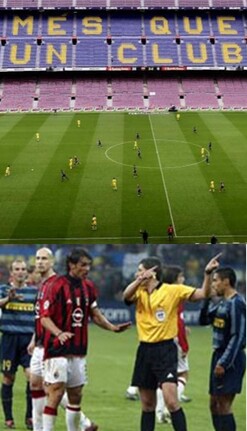
The advantage of such data, as Ponza and Scoppa explain, is that it removes issues such as familiarity with the venue and travel fatigue. These games are a sort of naturally occurring field-experiment. The designated home team in any given game has the advantage of a larger support because their fans are allocated a greater number of seats. Ponza and Scoppa take advantage of 22 seasons of Serie A data for same-stadium derbies in Milan and Rome, 10 seasons of data for Turin, 9 for Genoa, and 1 for Verona. This gives a total of 128 games. There were 64 games in Van den Ven’s data set.
The results from the larger data set show that the home team enjoy a goal difference advantage and take more points per game (although the summary statistics on the latter might raise some questions). The authors estimated that 60% of the points advantage that comes from home field advantage can be attributed to the impact of the larger crowd.
We need to be careful in how we imagine the channels through which the larger crowd might have the influence. We should consider the evidence from other sources. Two teams from the same city might compete in a final at a neutral venue. The travel fatigue and the familiarity with the venue should be the same. Does the team with the larger support win?
Previously, I presented some data on the home advantage in team golf. In these competitions, there is almost no influence from the referee. The advantages conferred by travel fatigue and familiarity with the venue remain to some extent. Yet, the home team wins well above 50% of the contests. We need to be careful when identifying the channel through which a crowd can influence a contest.
 RSS Feed
RSS Feed